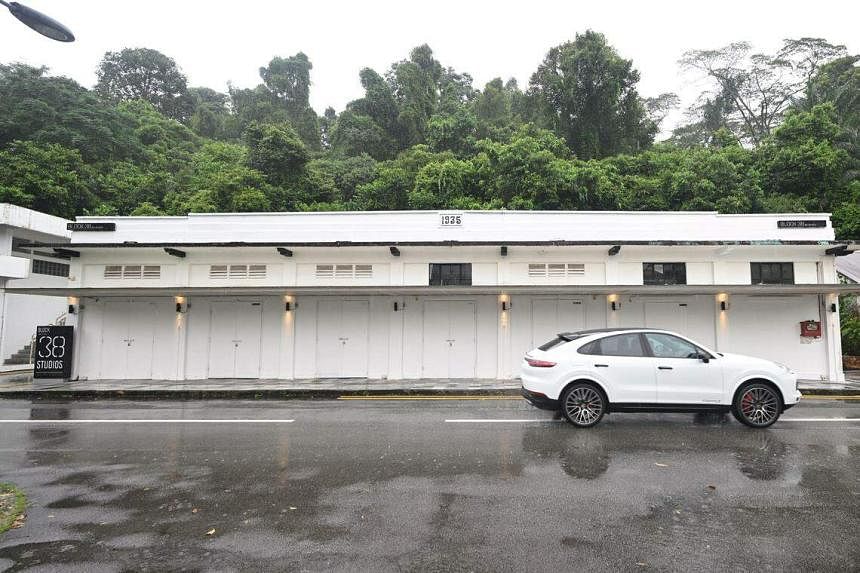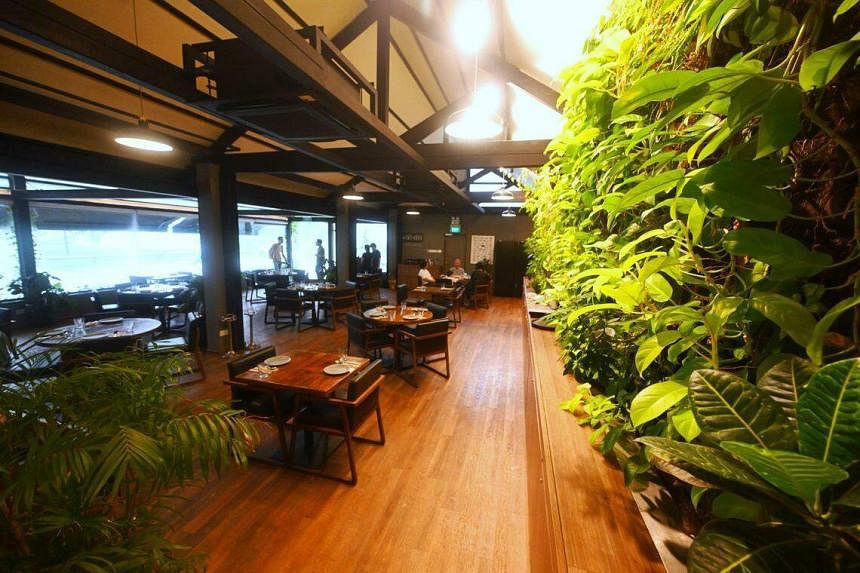SINGAPORE – Tenants at art and lifestyle enclave Gillman Barracks said they will not make hasty decisions about their leases following the news of the 6.6 ha site’s potential redevelopment for housing, announced in Parliament on March 5.
Heritage and environment impact studies for the site at the southern end of Alexandra Road are slated to conclude in 2026. The unknown outcome of those studies, and the guarantee that tenants will be able to stay on till the end of their leases, also mean they will treat it as status quo for now.
The 11 art galleries there said they await more concrete consultations with the authorities, noting that the 2030 date – when the last of the tenants’ leases will expire – is still too distant to make plans meaningfully.
They also lamented the impending loss of an unconventional art space, where galleries in colonial buildings are sited among rugged greenery, with wide open car parks for outdoor performances that conjure up a relaxed, edgy vibe.
Mr Sundaram Tagore, founder of Sundaram Tagore Gallery, said: “We take pride in this beautiful, green enclave where our gallery space is housed, and believe that the Singapore Government will act in the best interests of all stakeholders involved.”
He believes the gallery has done a great deal with its time there, including bringing in big names like Japanese artist Hiroshi Senju, known internationally for his large-scale waterfall paintings.
“We have mounted significant contemporary art exhibitions here year after year, drawing artists and collectors from around the world to Singapore,” he said.
Sundaram Tagore Gallery is one of the original wave of 13 galleries that answered the Government’s call in 2012, when it launched Gillman Barracks as Singapore’s art district after a $10 million makeover.
Since then, the enclave has acquired a prestige for its mix of international and local galleries and artists, and the crowd of young art aficionados and veteran collectors it manages to attract, especially during festival seasons.
But outside of peak periods, footfall has been low.
The authorities’ decision in 2014 to bring in more eateries and build more covered walkways there to increase traffic did not yield sufficient results. In 2015, five out of 17 art galleries decided against renewing their leases, citing poor sales and low visitorship.
Ms Audrey Yeo, president of Art Galleries Association Singapore and founder of contemporary art gallery Yeo Workshop at Gillman Barracks, said the remaining galleries are unsure of how to move forward.
“We hope for the support of the authorities to find a solution for us, considering we are at the mercy of landlords to thrive,” she said.

On the importance of maintaining art clusters that better justify people’s visits, she said: “These art clusters play a crucial role, not just as spaces for education and learning, but as catalysts for elevating the city’s visual literacy and cultural vibrancy.”
Restaurateur Tan Ken Loon, owner of seafood restaurant Naked Finn at Gillman Barracks, was well aware that the area was zoned as a reserve site when he first moved the restaurant there in 2012.
A reserve site indicates that its specific use has yet to be determined, so he knew not to “invest crazy money” in the space – as in any business, he said.

The Singapore Land Authority (SLA) had as recently as 2022 announced plans to rejuvenate the area into a creative lifestyle hub, by adding farmers’ markets, farm-to-table dining options and lifestyle workshops to the mix. It awarded contracts to new tenants like Didi Lifestyle in 2023.
Asked if this was ill-timed, Mr Tan said: “It’s what a good landlord should do for its tenants, instead of neglecting the area even if redevelopment is confirmed. I applaud them for doing the right thing.”
He hopes SLA will continue to be proactive in engaging tenants, adding: “The country needs to evolve, but we also need to know how to preserve. The community that has developed in the area makes it unique and valuable.”
Though possibly on its last legs, Gillman Barracks might still have one long, final hurrah.
On March 8, Didi Lifestyle officially launched The Southern Depot, a lifestyle and event space for hire that will include various businesses in one place, touting craft workshops, coffee appreciation events and even an ad hoc wrestling performance on its launch weekend.
Didi Lifestyle’s managing director Eugene Mah said that though the news was “not expected”, operations will not be affected. Its lease for two blocks runs for an initial period of five years until May 2027 and came with the option of an additional two terms of two years each – subject to terms and conditions.
Mr Mah said: “Typical leases for commercial spaces are for two years, with the possibility of a one-year extension, and anything extra is a bonus – we cannot plan beyond that.”
Mr Ewan Wong, head of lifestyle operations at Didi Lifestyle, said he and his colleagues “saw the synergy” between The Southern Depot – which offers artisanal goods, craft, dining, wellness and motorcycles under one roof – and landlord SLA’s plans to rejuvenate the area as a creative lifestyle hub.
The duo believe that Gillman Barracks – in its current form – should continue to have a place in the residential neighbourhood that the authorities are planning for the area.
“I would liken it to the dragon playground in Toa Payoh,” said Mr Mah. “The moment you think of a neighbourhood around here, you should think of Gillman Barracks.”
“The area has a long history that provides an existing identity for the new neighbourhood to build upon,” said Mr Wong, adding that any retention of built heritage should be sensitive to its current uses, instead of a complete refresh.
The other art cluster in Singapore now is in Tanjong Pagar Distripark, where the Singapore Art Museum (SAM) has taken a temporary space, along with galleries like 39+ Art Space and Gajah Gallery.
Its fate is also uncertain. Though SAM’s move has given the Distripark a much-needed anchor tenant, it is slated to return to its downtown building in Bras Basah Road after the $90 million renovation there is complete. There is no fixed date for when this will happen.
Correction note: The story has been edited for clarity.

